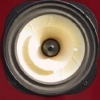Leaderboard
Popular Content
Showing content with the highest reputation on 01/14/2021 in all areas
-
There seems to be some consensus on the voltage requirements for electrostatic headphone amps. Nearly all of the commercially available designs put out between 1000 and 1600 volts peak-to-peak, a range of about 4 dB. The legendary Stax SRM-T2 was specified to put out a bit more, close to 1800 volts peak-to-peak, which is 1 dB higher. This would be equivalent to almost all loudspeaker amplifiers putting out between 50 and 125 watts, with the T2 being like a 160 watt amplifier. However, there hasn’t been much discussion on the current demands for electrostatic headphone amps. Output stage currents in commercial amplifiers have run between 2 mA/channel (Koss ES950) and 36 mA/channel (Blue Hawaii). Back in 1978, Nelson Pass published in The Audio Amateur (issue 4, p. 12) some measurements he had done on the slew rate of music signals. He tried out various cartridges and LP records, and using a 100 watt amplifier with a 30 volt/microsecond slew rate, reported that the highest slew rate he found with music signals was 1.5 volts/microsecond up to clipping levels. The late Peter Baxandall also published some years ago in Wireless World that music signals required an amplifier slew rate sufficient to drive a 6 kHz sine wave to clipping with low distortion, which works out to pretty much the same thing. A 100 watt amplifier has a peak-to-peak output of 80 volts. The Blue Hawaii, to take a current state of the art amplifier, has a peak-to-peak voltage at clipping of close to 1600 volts, which is 20 times higher, so the fastest music signal would have a slew rate of 30 volts/microsecond when the Blue Hawaii is driven to clipping. So how much current does an electrostatic headphone amp need to produce a slew rate of 30 volts/microsecond? A typical electrostatic headphone approximates a load of about 100 pf - Stax specifies most of their current models between 94 and 120 pf. The amount of current required for 30 volts/microsecond into 100 pf would be 3 mA. This is the amount of current that the amplifier has to supply to the headphones alone in order to play the fastest music signals up to clipping. Since amplifiers don’t sound their best at the very limits of their capability, for any real amplifier, there should be additional capacity in both slew rate and current over the bare minimum required. John Broskie has suggested on his TubeCAD website that for low distortion the maximum signal current demand on a tube be a fifth of the standing current. This calculation also assumes that the amplifier itself does not consume any signal current. But that is not always true. Take the Egmont, a basic, inexpensive tube electrostatic amp circuit. It uses 66k resistor loads in its output stage. With +/- 260 volt supplies the output stage runs at 7.9 mA current. If we drive the headphones to 1000 volts peak-to-peak using our fastest music signal the headphone consumes 1.9 mA, but the resistor consumes 7.6 mA, using all the current the output stage is theoretically capable of supplying. The reason that an amp with a total current of 7.9 mA can supply both 1.9 mA to the phones and 7.6 mA to the resistor loads is that the current to the headphone is approximately 90 degrees out of phase with the current to the resistors – remember the geometry of a right angled triangle? The headphone and resistor compete for the available current, and since the resistor is lower impedance than the headphone, the resistor hogs most of the current and the headphone is left with the scraps. Furthermore, the amount of signal current soaked up by the resistor depends on the magnitude of the signal, whereas the amount of current going to the headphones depends on the speed of the signal, so the ratio of 1.9 mA to the phones and 7.6 mA to the resistor is even worse almost all of the time. In fact, this is a problem for any electrostatic headphone amp that uses resistor loads in the output stage since the resistor sets both the standing voltage and the standing current. Massively increasing the voltage and current so that no user will ever come close to reaching its limits doesn’t really solve the problem, it just pushes it farther away. And then, a further problem is that devices and components which can withstand that amount of voltage, current and power are expensive, which rather defeats the goal of an inexpensive design. Now, take my revision of the Stax SRX tube design using current loads. The output stage runs at a higher current and voltage: 14 mA current with the power supplies run at +/- 325 volts. More importantly, the cascoded current loads on each plate measure over 160 megohms impedance, thus requiring a mere 4 microamps to drive them to clipping, so 99.9% of the total standing current is available to drive the headphones. The maximum current required to drive the headphones at clipping is about 2.4 mA, less than a fifth of the current available. To further illustrate the value of a good current source, let’s go back to the Egmont. With the output tubes in that design delivering the same peak signal current of 2.4 mA, it would produce about 300 volts peak-to-peak with about 2.3 mA going to drive the resistors and 0.6 mA to the headphones. For the same signal voltage into the headphones, the Egmont output tubes have to produce 4 times as much signal current. Now these are “back of the envelope” calculations. But at least, now we have a reasonable estimate of how much signal current an electrostatic headphone needs to faithfully reproduce the fastest music signals. And, it is clear that replacing resistor loads with current sources is a much more efficient method. Finally, let me make a brief comment about a related matter. It is sometimes said that electrostatic headphones require voltage but no power. This is false. It is true that electrostatic headphones resemble capacitors, and with a capacitor, the drive voltage and current are 90 degrees out of phase so that no power is consumed. However, remember that a capacitor is a simplified model of a stat headphone. In fact, electrostatic headphones have to consume energy, because we can hear the sound they produce! Sound is a form of energy, and by the law of conservation of energy, one of the most fundamental laws of physics, that means the headphones have to consume energy.1 point
-
I don’t regret preordering, and I had an excellent experience on a PC running a 9700k and a 2080. Minimal bugs and a generally clean, satisfying experience. I’m glad they put it out when they did, and I believe they did not expect the backlash they got. That said, I’m not sure it’s a “91” game even if everything works perfectly. I’ll revisit in 6 months or so once the DLCs drop, but outside of the core story and the better side quests it’s not a revelation. It looks fantastic, much better than anything I’ve ever played, but I think the artistic reach exceeded the gameplay grasp. A lot of seemingly complex systems are ultimately an unnecessary distraction. In Skyrim everyone ends up just playing a stealth archer because it’s too powerful to ignore, and the same goes for headshot pistol builds in Cyberpunk. I spent most of the game throwing weapons away and using revolvers and baseball bats. Every time I tried something new it was a punishment. I’ve been playing a lot of Breath of the Wild again with my daughter, and that is a perfect experience to me. No other game so fulfills its core promise, Cyberpunk included.1 point
-
The RK50 is only available in 10K as a stereo unit, the quad's are always 50K AFAIK.1 point
-
1 point
-
The 10M90S/DN2540 cascode combination makes a very good constant current source for a simple and easy to build circuit. One drawback is that the current setting resistor can be quite variable due to the variability in the DN2540 from sample to sample, so a bit of experimentation is necessary. The original SRX Plus circuit used a separate -18-24V supply constant current source (CCS) on the tail of the input diff amp, but I realized that there was no need for a separate supply, since the this could be derived from the B- supply by using a 220k dropping resistor, which was added to the schematic. This eliminates the need for a separate -18-24v supply and also balances out the B+ and B- currents.1 point
-
1 point
-
1 point
-
1 point
-
1 point
-
1 point
-
Ok, fair enough! I have about a hundred irons in the fire on this project - just debugged the display and moving onto casing up the controller - then I need to layout a backplane and then write some software.1 point




















